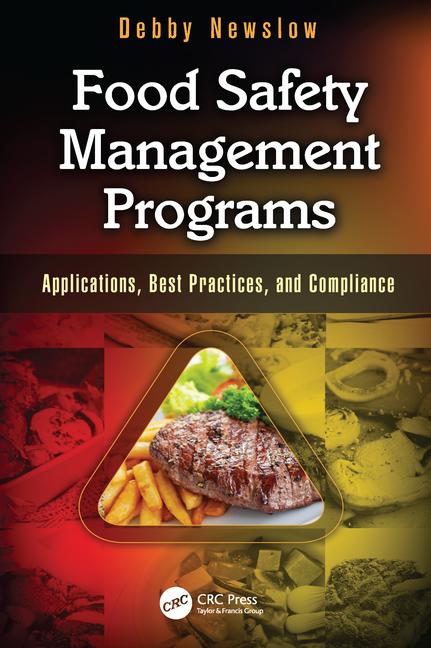Meeting the Challenges of Foodborne Illness Liability Claims

Between April and July of 2008 alone, over 1,300 people fell ill with Salmonella Saintpaul, a bacterial strain that infected people in 43 states.[1] As is often the case with foodborne illnesses like Salmonella infections, the actual culprit is difficult to pin down. Studies on these infections are believed to have narrowed the cause down to tomatoes, jalapeños, serrano peppers and/or cilantro. Much of the difficulty in identifying the source of the infections is that these foods are often served and consumed together.
Food Poisoning in General
Such a predicament is nothing out of the ordinary when dealing with food poisoning. In fact, the multi-state Salmonella Saintpaul outbreak is a great example of the types of challenges that lawyers, adjusters, food providers and claimants all face when dealing with claims arising from foodborne illnesses. By definition, foodborne illnesses involve the consumption of contaminated food or beverages. Although rarely fatal, foodborne illnesses may produce multiple sudden symptoms. In the case of the Salmonella Saintpaul outbreak, the ongoing investigation by the Department of Health and Human Services (HHS) is a difficult and complicated challenge.[1] Not only do victims of the illness have difficulty remembering which foods they ate, when they ate them and in what combination, but many of the foods the victims ate are no longer available for testing. As a result, tracing the source of contamination responsible for a foodborne illness outbreak can be an onerous and complex process.
Foodborne illness outbreaks are usually recognized when several people experience a similar illness after ingesting a common food, and epidemiological (laboratory or clinical) data implicate the common food as the source of the illness. This means a diagnosis of any type of foodborne illness generally requires more than one individual becoming sick. As a result of this rigid definition, far fewer incidents of food poisoning are reported than may actually occur.
Despite the infrequency with which food poisoning is confirmed, foodborne illness is a diagnosable condition if the proper tests are conducted. The difficulty in diagnosing a foodborne illness lies in the fact that food poisoning, by its very nature, is a transitory condition. Also, except in rare circumstances, no specific treatment is available for a suspected foodborne illness. Oftentimes, by the time people think to go to a doctor or hospital, the illness will have run its course.
The same issues complicating the HHS’ investigation of Salmonella Saintpaul are faced by parties to litigation stemming from a foodborne illness. Whether on the side of the plaintiff or the defense, these issues must be addressed in order to properly handle the case. Knowing when and what to do is a critical part of being prepared for when a foodborne-illness case arises. Preparation is critical for handling these types of cases, as time likely will be of the essence. Part of having a foundation for properly responding to a foodborne illness claim is understanding the current status of the law. With the shadow of the Salmonella Saintpaul outbreak still looming and over one-third of the cases occurring in Texas, now certainly seems like a good time to review the development and current status of Texas law surrounding claims and liability arising from foodborne illness and the closely related foreign objects in food.
Evaluating Possible Foodborne Illness
When faced with a potential food- poisoning incident, one of the crucial first steps should be to identify the source and the illness itself. If the claimant is indeed sick due to food poisoning, then action needs to begin immediately to deduce the cause of the illness. This can be a difficult and lengthy project. However, the task can be simplified if potential sources can be narrowed down and the disease itself can be identified. Following are some important questions that can help to steer an investigation in the right direction.
What are the claimant’s symptoms? This issue is important because the symptoms an individual exhibits play a major part in diagnosing food poisoning. Additionally, the symptoms can help identify the type of infection. As seen with the Salmonella Saintpaul outbreak, the identity of the pathogen itself can help point to potential sources.
How long did it take for the individual to become ill after he or she ate the questionable meal? As with the question of symptoms, the incubation period is critical in pinpointing the cause of an individual’s sickness. Various infections have different incubation periods, so if the pathogen can be identified, then know edge of the incubation period can further reduce the potential sources based on knowledge of when the claimant ate each food. This leads to the next question that should be asked.
What other meals did the claimant eat within 72 hours? Given that incubation periods can vary from as little as five minutes to as long as two weeks, it is beneficial to determine what the claimant ate at least 72 hours before eating the alleged contaminated food.
Did the vendor receive any other complaints similar to those of the claimant near the time that the claimant consumed the vendor’s food? One of the best ways to deduce the source of an illness is to look for other cases and focus on the foods that all or most sick individuals came into contact with or consumed. Additionally, for many types of food poisoning, a true outbreak will involve numerous individuals becoming ill. If no other complaints are found, then investigators should consider other possible causes for the sickness besides food poisoning.
Who ate with the claimant during the meal which the claimant alleges made him or her sick? Also, determine what exactly was eaten by those other individuals. This can be a simple way to identify other potential complaints, as many people who are infected with a foodborne illness do not seek help or come forward. If others developed similar symptoms after eating the same type of food, then this will help identify the source. For instance, if the claimant and three other people all ate the same food and yet the claimant is the only one who became ill, that raises serious doubt as to whether the food is the culprit for the illness.
Is there a history of similar claims before or after the claimant consumed the vendor’s food? If so, attention should be drawn to whether there are any similarities between the claimant’s situation and the other claims (i.e., time of year, type of food involved or similar employees).
Was the potentially contaminated product one that would have been distributed to other locations? If so, check with the other locations to see whether any similar complaints were filed there. This is yet another way to find similar cases and facilitate the process of narrowing down the source.
Once potential sources have been identified and narrowed down, then the next step in effective case handling is to preserve samples of the potential sources. This can be done in a variety of ways.
Is there any leftover food from the meal that the claimant consumed? Any remaining food should be immediately frozen (or at least refrigerated) so that the proper tests may be conducted. Refrigeration, however, will not hold food for an indefinite period. Therefore, if investigators are contemplating running tests on any potential source, they should do so immediately.
In connection with the preservation of possibly contaminated food, are there any containers in which the contaminated food was packaged? These containers (or wrappers) may provide a batch number or lot number. This will enable the investigators to see whether other locations that received products in this lot or batch also had complaints similar to the claimant’s. Also, identifying a potential source as part of a batch will allow other locations that received the products to either pull them from circulation or to be exceptionally observant and cautious in proceeding with use of those products.
Another crucial step in handling a foodborne illness claim is to properly prepare for establishing liability or the lack thereof. Much of the evidence that could be needed at a trial stemming from a foodborne illness liability claim is best analyzed and preserved right away. Testing will yield clearer, more accurate results if the products are as close as possible to being in the condition they were in when the claimant came into contact with them. Additionally, the following proactive steps should be taken:
Obtain copies of the claimant’s medical records for the time period in question. As stated above, often a claimant does not consult a doctor when he or she becomes ill. However, if the claimant did see a doctor, review the medical records closely. Pay attention to the history relayed by the claimant, the symptoms upon presentation, the tests ordered by the physician, any medication prescribed and, of course, the final diagnosis.
Determine where the claimant was employed at the time he or she became ill. An individual’s work environment may provide useful information. For example, does the claimant work in a job that exposes him or her to chemicals or viruses? Also, see if any of the claimant’s coworkers were sick at the same time as the claimant.
Establish whether any of the claimant’s family members or friends were sick around the same time as the claimant. If so, this may indicate that the claimant’s symptoms arose from a contagious disease as opposed to food poisoning.
Investigate (in detail) any policies the vendor may have in place pertaining to food receiving, storage, preparing, handling and holding. This information may help in evaluating whether the vendor’s food is the source of the claimant’s illness. Also, it can be useful at trial to demonstrate to a jury the extensive safeguards employed by the vendor.
Preparation is vital to effective handling of a potential foodborne illness claim. Once an allegation is made, the aforementioned steps need to be taken quickly to provide the best chance of identifying the true source and cause. The faster potential sources are identified, isolated, preserved and tested, the more likely the test results will be accurate and useful. The more time that passes between the alleged incident and the investigation, the more difficult it will be to track down other potential cases of contamination from the same source, to find potential witnesses and to identify all the foods consumed by the claimant in the 72 hours prior to the alleged contamination.
Foodborne Illnesses and Foreign Objects in Food: Texas Case Law
In Texas, when food products are sold for human consumption, the law imposes an implied warranty that the food products are wholesome and fit for human consumption.[2] This warranty was imposed by operation of law as a matter of public policy.[3] When food products are unfit for that purpose, Texas follows the rule stated in the Restatement (Second) of Torts § 402A. In order to recover under § 402A, one must show that the injury sustained was caused by the unwholesome and unfit condition of the food served.[4] Specifically, in order to prevail, a plaintiff must establish that:
• The product in question was defective;
• The defect existed at the time the product left the hands of the defendant;
• Because of the defect, the product was unreasonably dangerous to the user or consumer (plaintiff);
• The consumer was injured or suffered damages; and
• The defect, if proven, was a proximate cause of the injury suffered.[5]
The area fraught with the most uncertainty is proving that the food served was unfit for human consumption. Courts use two tests to determine proximate cause: the “foreign-natural” test and the “reasonable expectation” test.
Under the foreign-natural test, the courts draw a distinction between an injury caused by contaminated food and an injury caused by a substance that is natural to the product sold.[6] In cases using the foreign-natural test, the courts hold that no liability exists when the injury is caused by a substance natural to the product.[7] In Mix, the court held that bones that are natural to the type of meat served cannot be considered foreign, and the consumer should guard against the presence of such bones.
Under the reasonable expectation test, courts look for what the consumer reasonably expects to be in the food as served, not what might be natural to the ingredients of that food.[8] In Betehia, the court held that the plaintiff could recover because he was injured by a chicken bone in a chicken sandwich, and that the reasonableness of a consumer’s expectations is a question for a jury.[8]
Another important issue in foodborne illness cases involves who may be liable for a foreign object in food or contaminated food. Texas courts have acknowledged that the manufacturers of food products are liable for breach of warranty when their food is unfit for human consumption.[9] Furthermore, Texas courts have recognized that vendors of food are also liable when food is unfit for consumption.[10] Since Texas has adopted the language of § 402A, liability attaches to anyone who sells a product that is defective or is unreasonably dangerous. Therefore, it is foreseeable that liability would attach to anyone in the distribution chain as long as the defect existed at the time the product left the hands of the particular defendant.
Texas courts have yet to decide a case dealing with foreign objects in food that would call for a strict adoption of either test. From recent case law, the trend appears to be that if a case were in the gray area, the courts would tend to choose the reasonable expectation test, which involves determining what is reasonably expected by the consumer in the food as served. However, as it has been in the past, if the foreign object is clearly “foreign,” formal adoption of any one doctrine would not be necessary, because liability would attach due to the product being unfit for human consumption.
Conclusion
The Salmonella Saintpaul outbreak should serve as a reminder of how difficult it can be to process a claim or case involving a potential foodborne illness. Texas courts have long recognized that circumstantial evidence may be offered and relied upon to prove a claim that a food product is defective.[11] This places extra importance on the steps taken to analyze a foodborne illness claim and identify any information that points to a particular food as the culprit. Being prepared to immediately implement responsive procedures is the first step in properly responding to such a claim.
Mike H. Bassett is a Partner at The Bassett Firm. He can be reached at www.thebassettfirm.com or at 3838 Oak Lawn Avenue, Suite 1300, Dallas, Texas 75219. Phone (800) 310-9769. Fax (214) 219-9456.
Haley DeVault was a law clerk at The Bassett Firm previously. She can be reached at Haley.DeVault@haynesboone.com.
Bryan Green was also a law clerk at The Bassett Firm previously. He is now a 3rd year law student at Texas Tech University in Lubbock, Texas. He can be reached at Bryan.Green@ttu.edu.
References
1. http://www.cdc.gov/Salmonella/saintpaul/.
2. Jacob E. Decker & Sons, Inc. v. Capps, 139 Tex. 609, 164 S.W.2d 828 (1942).
3. Id. at 829.
4. Jim Dandy Fast Foods, Inc. v. Carpenter, 535 S.W.2d 786, 789 [Tex. Civ. App.— Houston (1st Dist.) 1976, no writ].
5. Gravis v. Parke-Davis & Co., 502 S.W.2d 863, 868 (Tex. Civ. App.—Corpus Christi 1973, writ ref’d n.r.e.).
6. Dandy, 535 S.W.2d at 789.
7. Id. [citing Mix v. Ingersoll Candy Co., 6 Cal. 2d 674, 59 P.2d 144 (1936)].
8. Id. [citing Betehia v. Cape Cod Corp., 10 Wis. 2d 323, 103 N.W.2d 64 (1960)].
9. Id. [citing Betehia v. Cape Cod Corp., 10 Wis. 2d 323, 103 N.W.2d 64 (1960)].
10. Dandy, 535 S.W.2d at 789.
11. Addie Evans v. MIPTT, L.L.C. d/b/a East Coast Buffet, 2007 Tex. App. LEXIS 4680, *8 (Tex.App.—Houston 1st District, 2007).
Looking for a reprint of this article?
From high-res PDFs to custom plaques, order your copy today!





